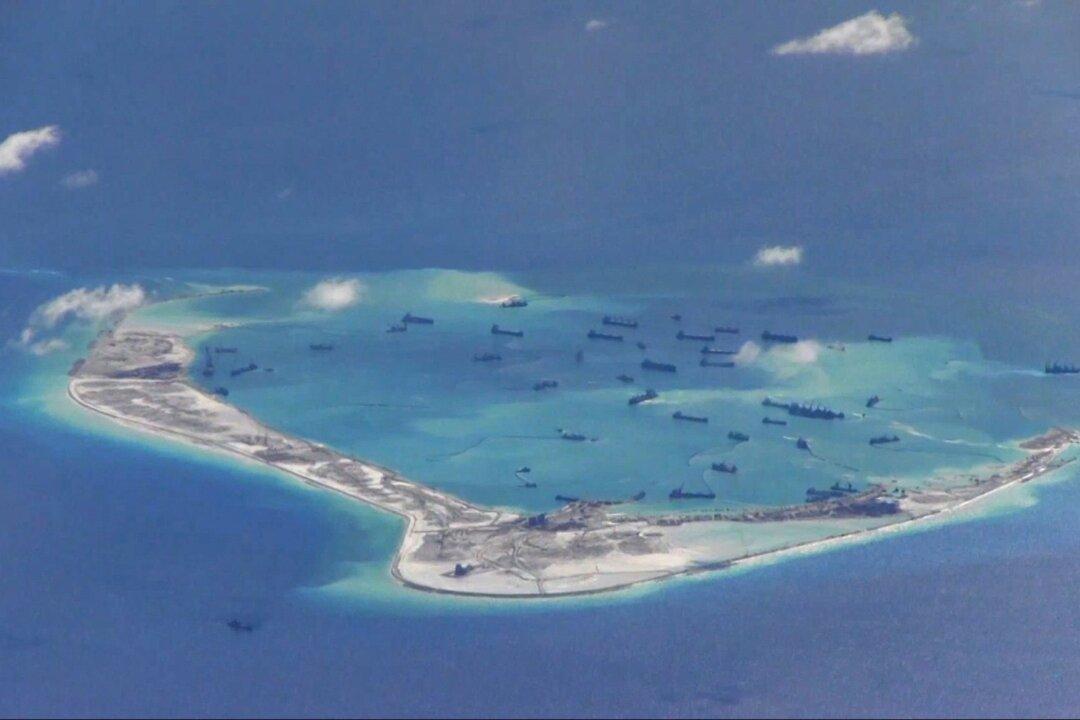The Chinese regime has moved armaments to its man-made islands in the South China Sea, as tensions with neighboring countries and the United States intensify.
The exact type of weapons deployed were not specified in an exclusive report from Australian news agency The Sydney Morning Herald. It states, however, that Australian officials are worried that China will follow up by deploying long-range radar and anti-aircraft batteries.
In the Chinese Communist Party’s newly released military strategy, it shifted the air defense policy of its air force to allow for offensive actions.
The Australian report states that discussions around the weapons deployments “are prompting discussions in senior military circles” that may lead Australia to begin sending its air force to the South China Sea for “freedom of navigation” missions “to demonstrate that Canberra does not accept Beijing’s hardening claims.”
Missions could include fly-throughs, sail-throughs, and similar exercises alongside the forces of other nations.
The discussions in Australia follow a new policy from the United States to directly challenge the Chinese regime’s land-grab in the South China Sea.





